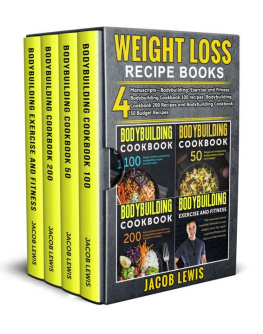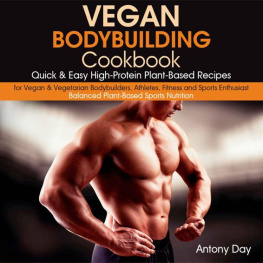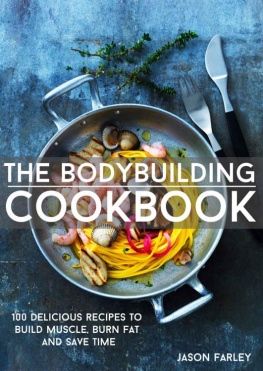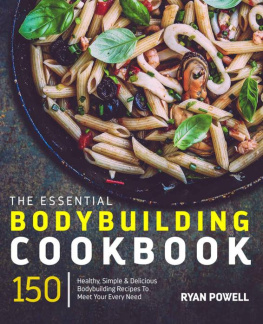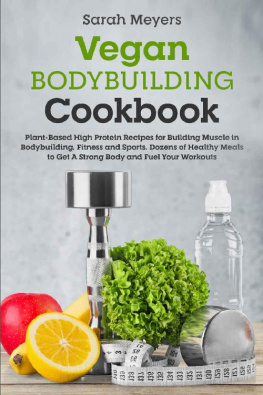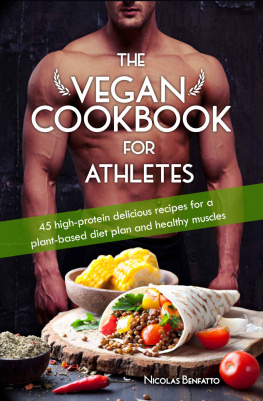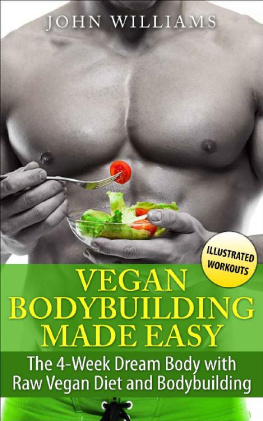Bodybuilding:
Exercise & Fitness
The tried and tested scientific formula, to lose weight, burn fat, reach supreme fitness and stack on lean muscle
Table of Contents
Chapter 1: How to Create a Weight Loss Programme
To begin with, its essential that you develop an understanding of the physiological processes thatre involved with increased body fat levels. Think about why we gain fat in different areas of our body and how it can impact on our health. There are a few technical terms and habits connected with fat gains that are important to understand.
Energy
Energy originates from the sun and is termed as light energy. Through the process of photosynthesis, plants convert light energy into a stored chemical energy. Then we acquire the energy we need by eating those plants or through animal sources that consume those plants.
Energy is stored in our food in the form of fat, protein and carbohydrate. These are the main macronutrients and they get broken down to supply energy, which the body then uses.
Energy is spread out and performs many tasks, its used to build muscle and repair damaged tissue after exercise or injury. Its also used to carry substances including glucose, which is our bodys main source of energy and calcium through to cell membranes. A small amount of energy is used to nourish skeletal muscle activity, allowing the body to create movement and generate force.
The activity of muscle creates a vast stress on the bodys capability to produce energy, as the rate of energy thats used through intense exercise such as sprinting, can be a thousand times more than what would be required at rest.
Macronutrients
As discussed above, macronutrients are what fuels our body and consist of fat, protein and carbohydrate. Fat has an energy yield of 9.3 kcals/g. Protein has an energy yield of 4.3 kcals/g and carbohydrates has 4.1 kcals/g.
A small amount of fat is crucial for our bodies to function, although many believe that body fat is unhealthy and bad for us. However, its an immense potential source of energy, as just 1kg of stored body fat can supply up to 7,000 kcals of energy.
Even those who are very lean can rely on fat stores for energy. The body stores a substantial amount of energy, that has potential to be used as energy in the form of fat. For example, somebody who weighs in the average category with around 13% body fat, can store fat of 70,000 kcals, which would be enough to run 1,126 km. Their carbohydrate stores would equal to approx. 2,500 kcals, which is the equivalent of the energy required to run around 40 km.
Our internal organs are protected by fat which serves as a warmth insulation and to store energy for future use. These are just a few of the many reasons why our body stores fat.
Body fat is stored within two storage sites fat storage and essential fat.
Storage fat is composed mainly of adipose tissue, which includes the fat under the skins surface and that of which protects the organs inside the chest and abdomen from trauma.
Essential fat is spread out and stored all over the body including such sites as lipid-rich tissues of our central nervous system, heart, lungs, kidneys, liver, intestines, spleen, in bone marrow and muscles.
Essential fat is needed for normal physiological functioning. Women have specific sex essential fat in their buttocks, thighs, pelvis and breast regions, which is important for both child bearing and the functioning of hormones.
Although there are many debates, men and women share a similar amount of fat storage, with men being 12% and women 15%, although the entire essential fat percentage in females (including sex specific fat) averages around four times the utility of essential fat in males.
Our body stores fat in cells that are known as adipocytes or fat cells, theyre specifically designed to store energy as fat. The fat stored within these cells are known as triglycerides, that can be broken-down for energy supply. The cells store excess fats and make them available for use when energys required.
Somebody with an average weight has around 25-30 billion fat cells, however, an obese individual can have as much as 42-106 billion. The size of the fat cells in an obese person is on average 40% larger when compared with an individual of normal weight.
Much of our fat is contained in adipose tissue which consists of around 83% fat, its supportive structures of around 15% water and 2% protein.
Adipose tissue has two distinct types, the white adipose (WAT) which is the fat storage and the brown (BAT) which produces heat.
Brown adipose tissue is often referred to as baby fat, because its mainly present within babies and serves to produce heat for the survival of the baby.
When we gain moderate amounts of weight as an adult resulting from excessive eating, our existing fat cells begin to fill up with even more lipids, becoming larger. This process is known as fat cell hypertrophy.
When an obese person gains excessive amounts of weight, theyll reach a point known as, maturity onset severe obesity, where they obtain even more body fat. The adipocytes then reach their hypertrophic limits to which they cannot increase in size. As they can no longer increase in size, the total number of adipocytes increase through a process known as, fat cell hyperplasia. Its believed that the body fat (or around 170% of normal weight) of an obese person is around 60%, before there becomes a direct result in increased numbers of adipocytes.
Once an individual loses weight, each individual adipocyte cell decreases in size, but remains the same in number and remains in place awaiting to be refilled.
Typically, its most common for people to gain fat around the abdomen region or thighs. Lets discover below, whats accountable for the differences in which people store body fat in certain areas of the body.
Lipoprotein lipase is an enzyme, it facilitates uptake and storage of triglycerides by the fat cells. The variations of lipoprotein activity, contributes to both the fat distribution differences between people and affects the changes in fat distribution that take place during mid-age and pregnancy.
Total body fat distribution differences between genders, are closely related to the larger amount of lipoprotein which females possess. In females, the fat cells of the breast, thigh and hip create considerable amounts of lipoprotein. Whereas males, the abdominal fat cells are the ones that are active with the lipoprotein enzyme.
When an obese individual loses weight, their fat cells increase their level of lipoprotein, which makes it easier for them to regain the weight and body fat. The bigger and more obese the person was before losing weight, the more vigorously their body will try to regain the lost weight.
The term pear shaped, is where somebodies body resembles a pear with stored fat in the hips and thighs, but the correct term is gynoid obesity.
Android obesity is generally associated with men, the shape tends to resemble an apple with much of the fat distribution localised around the waist and upper body. This tends to place people at a greater risk of type 2 diabetes, hypertension, hypercholesterolemia, coronary heart disease, several types of cancers and premature death when compared to people with gynoid obesity.
Having too much fat can be harmful to your health and it does matter where the fat is carried. The health risks of someone with android obesity are far greater than those with gynoid obesity. The reason for this is because metabolically, its more responsive than fat stored of the thighs and hips and is more likely to be broken down leading to atherosclerosis, heart disease and other serious conditions.
Although android obesity is typically associated more with men and gynoid obesity with women, some men do have gynoid obesity and vice versa.
Next page
